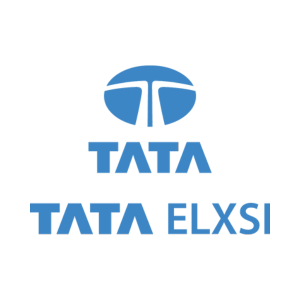In the rapidly evolving world of digital health, seamless healthcare software integration has become a cornerstone for effective patient care and streamlined clinical operations. Gone are the days when healthcare systems could afford to operate in isolation; today, providers and organizations must harness the power of interconnected platforms to meet rising patient expectations, manage complex treatments, and comply with ever-changing regulations. Whether you’re a hospital IT administrator, a product manager in medical device software development, or a clinician looking to improve workflows, understanding how and why these systems should work together is essential. Below is a comprehensive look at the current landscape, the challenges involved, and the best practices that will define healthcare software integration in 2025.
1. Understanding the Evolving Needs of Healthcare Software
Healthcare has grown increasingly complex, with organizations juggling electronic health records (EHRs), telemedicine platforms, billing solutions, supply chain systems, and more. Historically, these components operated in silos, creating roadblocks to effective data integration. However, the emergence of healthcare software integration solutions has paved the way for a more holistic, patient-centric approach.
The driving force here is the exponential growth of medical data, coupled with patient demands for faster and more personalized care. Whether it’s combining wearable device data with patient records or integrating imaging software with AI-driven analytics, new capabilities are pushing healthcare providers to develop robust system interfaces. Moreover, the shift toward value-based care models—where outcomes and cost-efficiency reign supreme—further underscores the importance of healthcare software integration in day-to-day operations.
2. The Role of Digital Health and Medical Management
Digital health is no longer just a buzzword; it’s the new normal. From telehealth visits to remote patient monitoring, digital health technologies permeate virtually every aspect of healthcare delivery. For organizations to get the most out of these innovations, they need systems that communicate with one another without friction. A well-orchestrated approach to healthcare software integration ensures that pertinent data—like diagnostic test results, patient histories, and real-time vitals—flows across platforms seamlessly.
This interconnectivity plays a vital role in medical management, specifically in care coordination and patient engagement. For instance, a clinician accessing a unified dashboard can immediately see medication adherence data, lab results, and notes from specialists. This comprehensive perspective enables data-driven decisions, reduces duplication of tests, and speeds up interventions when red flags arise. In essence, healthcare software integration drives better medical management, leading to improved patient outcomes and heightened operational efficiency.
3. Overcoming Common Integration Challenges
While the value of integration is clear, the road to achieving it can be fraught with challenges:
- Legacy Systems: Many hospitals and clinics still rely on older software that doesn’t easily connect with modern solutions. Retroactively fitting these systems with APIs or custom interfaces can be costly and time-consuming.
- Data Security and Compliance: Protecting patient information is paramount. Ensuring compliance with regulations such as HIPAA or GDPR adds complexity to integration efforts, especially when data flows among multiple vendors.
- Interoperability Standards: Different regions and providers may favor distinct standards (like HL7, FHIR, or DICOM). Achieving a truly universal framework for healthcare software integration requires cooperation from industry stakeholders, regulators, and technology vendors.
- Resource Constraints: Many healthcare organizations face budgetary and staffing limitations that make large-scale integration projects daunting. Balancing routine IT maintenance with ambitious integration goals often leads to delays or project scope reductions.
Despite these hurdles, forward-thinking health systems recognize that the long-term ROI and patient care benefits outweigh the initial pains. By allocating the right resources, forming strategic partnerships, and embracing industry standards, they can move closer to a truly integrated healthcare environment.
4. Best Practices for Healthcare Software Integration in 2025
As we look ahead, certain best practices are emerging as the gold standard for healthcare software integration:
a) Adopting a Modular Approach
Rather than attempting to create one massive system, organizations can benefit from modular designs that allow each component—be it an EHR module or a billing module—to plug into a central integration layer. This approach simplifies maintenance, encourages scalability, and accommodates future technology upgrades with minimal disruption.
b) Leveraging Cloud-Based Solutions
Cloud-native technologies provide a flexible, secure, and scalable backbone for data integration. By moving away from on-premises servers, healthcare providers gain the ability to quickly spin up new services or deactivate outdated ones without massive capital expenditures.
c) Implementing API-Driven Architectures
APIs (Application Programming Interfaces) are the gateways that enable different software platforms to communicate. In healthcare software integration, well-designed, standardized APIs facilitate swift and secure data exchange, reduce duplication of effort, and expand interoperability beyond organizational boundaries—such as pharmacies, labs, or specialist clinics.
d) Prioritizing Interoperability Standards
Adherence to standards like HL7 FHIR (Fast Healthcare Interoperability Resources) ensures that all data is formatted consistently, streamlining the exchange of medical information. Standards are crucial for ensuring that multiple systems can seamlessly read, interpret, and store shared data.
e) Incorporating Security from Day One
In a sector as sensitive as healthcare, security cannot be an afterthought. Every step of healthcare software integration—from design to deployment—must align with robust cybersecurity protocols and comply with regulations like HIPAA. This includes encryption, multi-factor authentication, and real-time monitoring for unauthorized access.
5. The Synergy with Medical Device Software Development
It’s impossible to discuss healthcare software integration without considering medical device software development. Modern medical devices—from wearables that track daily activity to sophisticated monitoring tools in ICU settings—generate huge volumes of data. Tapping into this data in real time can significantly boost diagnostic accuracy, expedite clinical decision-making, and enrich patient records.
However, integrating medical devices introduces additional complexity. These devices often use proprietary protocols, and ensuring a consistent level of cybersecurity is critical. Moreover, devices must meet rigorous regulatory standards before they can be used in clinical environments. As a result, successful healthcare software integration initiatives frequently require close collaboration between device manufacturers, software developers, and healthcare IT teams. When managed effectively, this synergy unlocks new possibilities—such as automating alerts when sensor readings exceed safe thresholds or integrating device data into telemedicine visits for remote consultations.
6. Emerging Technologies Shaping Healthcare Integration
A range of emerging technologies is poised to reshape healthcare software integration in 2025 and beyond:
- Artificial Intelligence (AI): Machine learning algorithms can improve data mapping, identify anomalies, and predict potential system bottlenecks. AI-driven interoperability tools can expedite merging datasets from different EHRs and help with predictive analytics.
- Blockchain: Although still in its early stages within healthcare, blockchain could provide a tamper-proof ledger for patient data and transaction records. Its distributed architecture can help ensure secure data sharing across numerous stakeholders.
- Internet of Things (IoT): Networked devices—ranging from smart hospital beds to wearable ECG monitors—continually stream data. As IoT adoption grows, a robust healthcare software integration framework will be needed to sift through the volume of real-time data and deliver actionable insights to clinicians.
- Natural Language Processing (NLP): NLP tools can transcribe clinician notes, parse patient messages, and standardize medical terminology. This technology makes it easier for integrated systems to interpret free-text data, further fueling collaboration across diverse software platforms.
7. Measuring Success and Looking to the Future
The success of healthcare software integration isn’t simply measured by reduced manual data entry or fewer silos—though both are meaningful indicators. It also manifests in tangible improvements to patient outcomes, streamlined workflows for medical staff, and more efficient use of healthcare resources. Tracking these metrics can help organizations refine their integration strategies over time, making iterative improvements that align with new medical discoveries and patient demands.
Looking ahead, the line between in-person care and digital health will continue to blur. Telehealth consultations, remote patient monitoring, and AI-assisted diagnostics will all rely on seamless data exchanges to deliver safe, high-quality care. Organizations that invest in robust healthcare software integration today will find themselves better equipped to handle the challenges of tomorrow, such as increasingly complex patient needs, workforce shortages, and the global push toward personalized medicine.
8. Conclusion
As we move further into 2025, healthcare software integration stands as one of the most significant factors shaping the quality, accessibility, and cost-effectiveness of care. Whether it’s unifying EHR systems, automating data flows from medical devices, or harmonizing telemedicine platforms, integration is the backbone that allows modern healthcare to operate efficiently. By embracing best practices—like modular architectures, API-driven communication, and strict adherence to interoperability standards—healthcare organizations can establish a resilient digital ecosystem.
Moreover, the synergy with medical device software development promises even greater potential, as real-time patient data and high-fidelity monitoring reshape diagnosis and treatment approaches. Ultimately, healthcare software integration isn’t just about technology; it’s about delivering meaningful, patient-centric care in a world where health data has become as valuable as any medication or procedure. With the right strategies in place, providers can meet the evolving demands of the digital health landscape and significantly elevate the standard of care for all.







